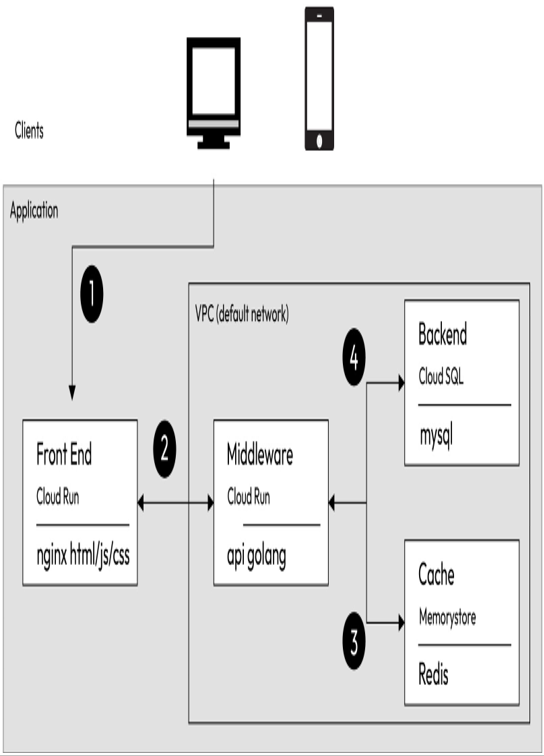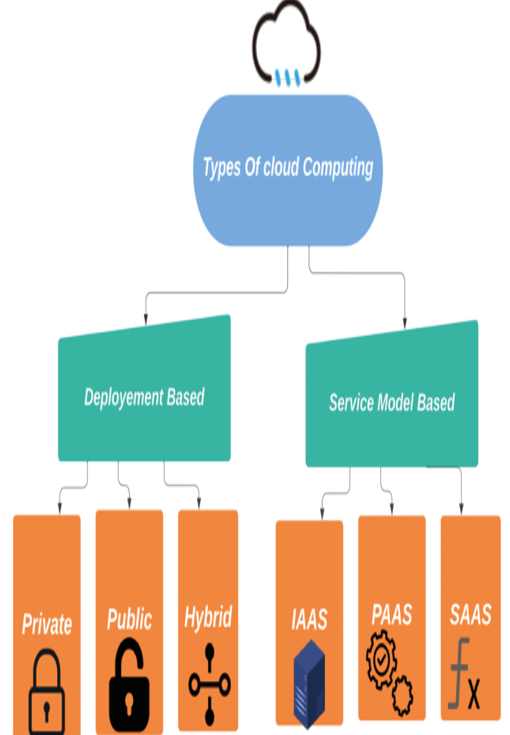Understanding cloud architecture – Fundamentals of Cloud Architecture
Understanding cloud architecture
To comprehend the inner workings of cloud computing, it is crucial to understand its underlying architecture. This section provides a comprehensive overview of cloud architecture, elucidating the key components and their interconnections. It explains the concepts of virtualization, distributed computing, and load balancing, which form the building blocks of cloud infrastructure.
Cloud architecture is a term that’s used to describe the design and organization of a cloud computing system. A cloud computing system typically consists of various components, including computing resources, storage, network infrastructure, security measures, and software applications. Cloud architecture refers to the way these components are organized and integrated to provide a seamless and efficient cloud computing environment. The following figure depicts a basic cloud architecture design. It covers the end user connection, backend/database, memory cache, middleware, and frontend in Google Cloud:

Figure 1.3 – A basic cloud architecture
Cloud architecture involves making critical decisions regarding the cloud deployment model, cloud service model, and cloud providers, among others. These decisions will affect the performance, scalability, security, and cost-effectiveness of the cloud computing system. A well-designed cloud architecture should enable an organization to leverage the benefits of cloud computing, such as cost savings, scalability, and flexibility, while minimizing the potential risks and drawbacks.
Cloud architecture is an essential aspect of any cloud computing project, and it requires a deep understanding of cloud computing technologies, business requirements, and architecture principles. A successful cloud architect must be able to design and implement cloud solutions that meet the specific needs of their organization, whether it is a small business, a large enterprise, or a government agency.
Cloud architecture can also be described as a set of principles, guidelines, and best practices that are used to design and manage cloud computing systems. It involves planning, designing, implementing, and managing cloud-based solutions that meet specific business needs and requirements.
The following figure showcases a visual representation of cloud computing, highlighting the different deployment models and service models:

Figure 1.4 – A visual representation of cloud computing
At a high level, cloud architecture involves several key components, including the following:
- Cloud service models: Cloud computing provides three distinct service models: IaaS, PaaS, and SaaS. Each model offers users different levels of control, flexibility, and customization. For instance, IaaS examples include Amazon Web Services (AWS) EC2 and Microsoft Azure Virtual Machines, which grant users access to virtual servers and infrastructure resources. PaaS examples encompass Google Cloud Platform’s App Engine and Heroku, which provide managed platforms for application development and deployment. Lastly, SaaS examples encompass Salesforce, a cloud-based CRM platform, and Google Workspace, a suite of productivity and collaboration tools. These examples demonstrate how IaaS empowers users to provision and oversee virtual infrastructure, PaaS abstracts the underlying platform for application development, and SaaS grants access to fully functional software over the internet. By utilizing these distinct service models, organizations can leverage cloud-based resources and software without the need to manage infrastructure or install software locally.
- Cloud deployment models: Cloud computing deployment models encompass public cloud, private cloud, hybrid cloud, and multi-cloud, each presenting unique advantages and challenges. Examples of these deployment models include well-known providers such as AWS, Microsoft Azure, and Google Cloud Platform. In a public cloud, computing resources are shared among multiple organizations and accessible over the internet. Private cloud, on the other hand, involves dedicated cloud infrastructure that can be deployed on-premises or hosted by a single organization, offering greater control and privacy. Hybrid cloud combines both public and private cloud environments, enabling organizations to leverage scalability and flexibility. Multi-cloud refers to utilizing multiple cloud service providers concurrently, allowing for workload distribution, redundancy, cost optimization, and access to specialized services. These deployment models grant varying levels of control, flexibility, and scalability, enabling organizations to tailor their cloud strategies to their specific needs and leverage the full benefits of cloud computing.